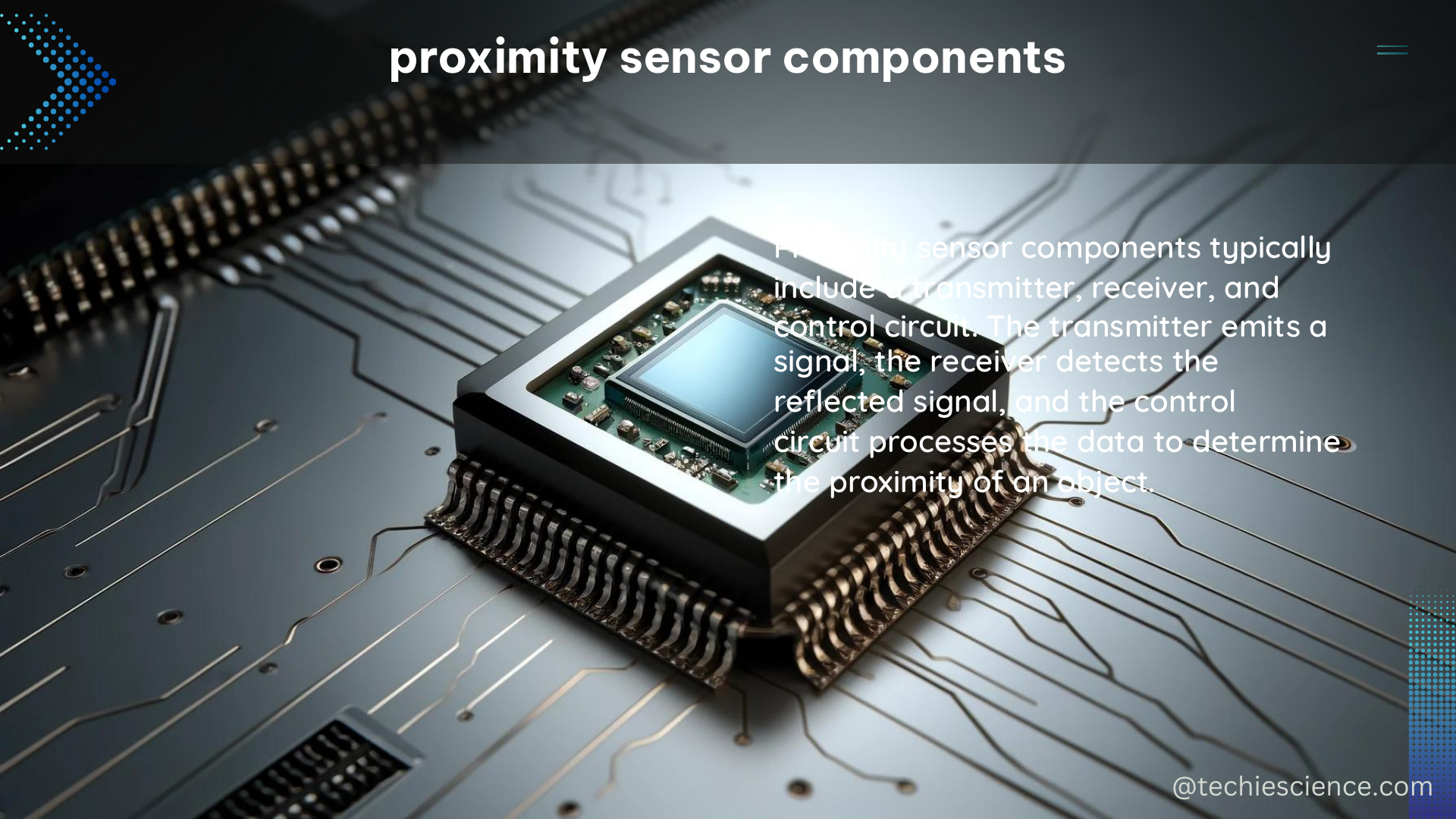Proximity sensors are essential components in various industries, providing non-contact detection of objects and improving safety, efficiency, and productivity. These sensors can be categorized into four main types based on their sensing principle: inductive, capacitive, ultrasonic, and photoelectric. Each type has its unique characteristics, advantages, and applications, making them suitable for a wide range of DIY projects and custom applications.
Inductive Proximity Sensors
Inductive proximity sensors are used to detect metallic objects. They work based on the principle of electromagnetic induction, where a coil generates an electromagnetic field that induces a current in the metallic object. The sensor detects the change in the magnetic field and triggers an output signal.
Key Specifications:
– Sensing Range: Typically up to 30 mm
– Suitable for Detecting: Ferrous and non-ferrous metals
– Common Applications: Automation, manufacturing, and robotics
Technical Details:
– Coil Diameter: Typically 3-12 mm
– Coil Inductance: Typically 0.1-1 mH
– Oscillation Frequency: Typically 100-500 kHz
– Sensing Distance Repeatability: Typically ±1-2% of full scale
– Response Time: Typically 0.1-2 ms
Capacitive Proximity Sensors

Capacitive proximity sensors are used to detect both metallic and non-metallic objects. They work based on the principle of capacitance, where a capacitor is formed between the sensor and the object. The sensor detects the change in capacitance and triggers an output signal.
Key Specifications:
– Sensing Range: Typically up to 100 mm
– Suitable for Detecting: Plastics, liquids, and gases
– Common Applications: Level sensing, fluid measurement, and food processing
Technical Details:
– Sensing Electrode Diameter: Typically 10-50 mm
– Sensing Electrode Thickness: Typically 1-5 mm
– Capacitance Range: Typically 10-100 pF
– Sensing Distance Repeatability: Typically ±2-5% of full scale
– Response Time: Typically 1-10 ms
Ultrasonic Proximity Sensors
Ultrasonic proximity sensors are used to detect objects using sound waves. They work based on the principle of echo, where the sensor emits a high-frequency sound wave and detects the echo reflected from the object. The sensor measures the time delay between the transmitted and received signals and calculates the distance to the object.
Key Specifications:
– Sensing Range: Typically up to several meters
– Suitable for Detecting: Solids, liquids, and gases
– Common Applications: Distance measurement, object detection, and collision avoidance
Technical Details:
– Transducer Frequency: Typically 40-400 kHz
– Beam Angle: Typically 8-30 degrees
– Sensing Distance Accuracy: Typically ±1-3% of full scale
– Response Time: Typically 10-100 ms
– Operating Temperature: Typically -20°C to 70°C
Photoelectric Proximity Sensors
Photoelectric proximity sensors are used to detect objects using light. They work based on the principle of optical reflection, where the sensor emits a beam of light and detects the reflection from the object. The sensor measures the intensity and angle of the reflected light and triggers an output signal.
Key Specifications:
– Sensing Range: Typically up to several meters
– Suitable for Detecting: Transparent and opaque objects
– Common Applications: Object detection, positioning, and counting
Technical Details:
– Light Source: Typically LED or laser diode
– Wavelength: Typically 650-850 nm
– Beam Diameter: Typically 1-5 mm
– Sensing Distance Accuracy: Typically ±1-2% of full scale
– Response Time: Typically 0.1-10 ms
– Operating Temperature: Typically -20°C to 60°C
Proximity Sensor Modules and Development Kits
Proximity sensors can be easily integrated into DIY projects using off-the-shelf modules and development kits. These modules and kits typically include the sensor, amplifier, and signal conditioning circuits, providing a digital or analog output signal. They also include microcontrollers and software libraries, allowing users to develop custom applications and interfaces.
Key Features of Proximity Sensor Modules:
– Integrated sensor, amplifier, and signal conditioning circuits
– Digital or analog output signal
– Compact and easy-to-use form factor
– Typical supply voltage: 5-24 VDC
– Typical current consumption: 10-50 mA
Key Features of Proximity Sensor Development Kits:
– Integrated sensor, microcontroller, and software libraries
– Programmable and customizable interfaces
– Evaluation and prototyping capabilities
– Typical microcontroller: Arduino, Raspberry Pi, or STM32
– Typical programming languages: C/C++, Python, or Scratch
By understanding the technical specifications and capabilities of proximity sensor components, DIY enthusiasts and engineers can select the most suitable sensor for their projects and develop innovative applications that leverage the power of non-contact object detection.
References:
- Technical Explanation for Proximity Sensors, Omron Corporation, https://www.ia.omron.com/data_pdf/guide/41/proximity_tg_e_6_2.pdf
- A Complete Guide to Proximity Sensors, RS Components, https://uk.rs-online.com/web/content/discovery/ideas-and-advice/proximity-sensors-guide
- An Overview of Proximity Sensors, Machine Design, https://www.machinedesign.com/automation-iiot/sensors/article/21831577/baumer-electric-an-overview-of-proximity-sensors
- Exploring the Different Types of Proximity Sensors: Object Detection, Dynamic Rep, https://www.dynamicrep.com/blog/exploring-the-different-types-of-proximity-sensors-object-detection
- Proximity Sensor, ScienceDirect, https://www.sciencedirect.com/topics/engineering/proximity-sensor

The lambdageeks.com Core SME Team is a group of experienced subject matter experts from diverse scientific and technical fields including Physics, Chemistry, Technology,Electronics & Electrical Engineering, Automotive, Mechanical Engineering. Our team collaborates to create high-quality, well-researched articles on a wide range of science and technology topics for the lambdageeks.com website.
All Our Senior SME are having more than 7 Years of experience in the respective fields . They are either Working Industry Professionals or assocaited With different Universities. Refer Our Authors Page to get to know About our Core SMEs.